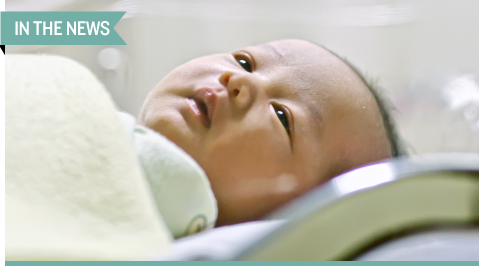
Image credit: iStock.com/ronnisugiharto
State-run newborn screening programs lack uniformity and at times, fail to use best practices in their testing protocols. As a result, abnormal test results are falling through the cracks and adversely affecting patient health, according to a new investigative report from the Milwaukee Journal Sentinel.
Of the 4 million babies born in the United States each year, at least 98% get screened for genetic disorders, testing that has been been praised for detecting life-threatening illnesses and saving at least 12,000 newborns annually, wrote Journal Sentinel reporter, Ellen Gabler. CLN Stat has highlighted Gabler’s previous investigative work on newborn screening programs, in which she reported on the slow transit and processing times of newborn screening samples, and federal, state and local efforts to address these shortcomings.
Gabler’s new report discusses how state-run labs fall short in their approach to testing newborns for defects, and the serious consequences this can have for children’s health. “Testing varies significantly between states, some of which don’t follow scientific standards or common sense,” she wrote. Inconsistencies exist in particular among cutoff points to detect abnormalities.
“While lab directors talk about the problems with false positives, a study published five years ago found that 43% of newborn screening cutoffs were set at a level where false negatives were likely to occur. A false negative is much worse than a false positive: That’s when a baby with a condition is missed entirely,” Gabler wrote.
Many times, labs don’t make changes until the worst happens: A child experiences life-changing adverse health effects or dies. Some states say they can’t afford to make necessary upgrades to improve newborn screening. However, as was the case in North Carolina, money issues prevented a reprogramming of its computers to correct a methodology error, an infant experienced serious brain damage as a consequence, according to the article.
Gabler’s report spotlights a case in Wisconsin involving a male infant named Mel Russell who failed to get treatment for a rare metabolic disorder known as propionic acidemia, even though a newborn screening test indicated possible abnormal acid levels in his blood. The case went to court in Milwaukee County, where the parents leveled the blame at the boy’s pediatrician, who saw the abnormal test result and a follow-up normal result, and decided not to take action.
Because of the procedures this state lab followed, the value hadn’t been rounded up, ruling out the need for the boy to receive immediate treatment for this condition.
Although the doctor was the one on trial, Gabler’s article makes the point that “she was in court defending herself because of less than two ten-thousandths of a point—the difference between Mel’s 0.1998380 and the state lab’s alert value of 0.20. if Mel’s result had stayed rounded up, all six of his markers would have been abnormal.”
Wisconsin was found to have one of the highest screening cutoffs for Mel Russell’s disorder. Globally, since 2004, nearly 40 babies with propionic acidemia had screening results that fell below this cutoff. “Their results fall in a range that would have prompted the lab to issue a normal report,” the article noted. Wisconsin eventually set a lower primary cutoff after the boy suffered a stroke from the complications of his condition. But even under this new threshold, Gabler’s report said the cutoff would still miss infants with this defect.
The judge presiding over the Mel Russell case thought the doctor’s interpretation of the test reports was the relevant topic at hand, rather than the state lab’s processing of the results.
However, Gabler’s article lists a number of instances in which the protocols of state labs do, in fact, impact patient health. As was the case of Mel Russell, “babies with borderline results are most at risk. Yet state labs typically only report whether results are normal or abnormal, so a pediatrician wouldn’t know if a baby was on the verge of being flagged for a serious disorder,” she wrote.
This has relevance for a child’s health as he or she gets older and developmental issues arise—and physicians can’t find a reason for the disorder.
One of Gabler’s sources in the article, Dietrich Matern, MD, PhD, mentions a software tool that has been gaining momentum worldwide since 2004. The problem is not enough labs in the United States are using this resource, which seeks to streamline newborn screenings across the globe, said Matern, co-director of the biochemical genetics laboratory at Mayo Clinic in Rochester, Minn.
Free to medical professionals, the software “draws on screening results from 30 million babies throughout the world, 19,000 of whom were diagnosed with metabolic disorders. Instead of relying on cutoff values that may be arbitrary or outdated, labs can compare each newborn’s results with babies who have actually been diagnosed,” Gabler wrote.
Had the software been used to calculate Mel Russell’s results, it would have indicated a diagnosis of propionic acidemia.